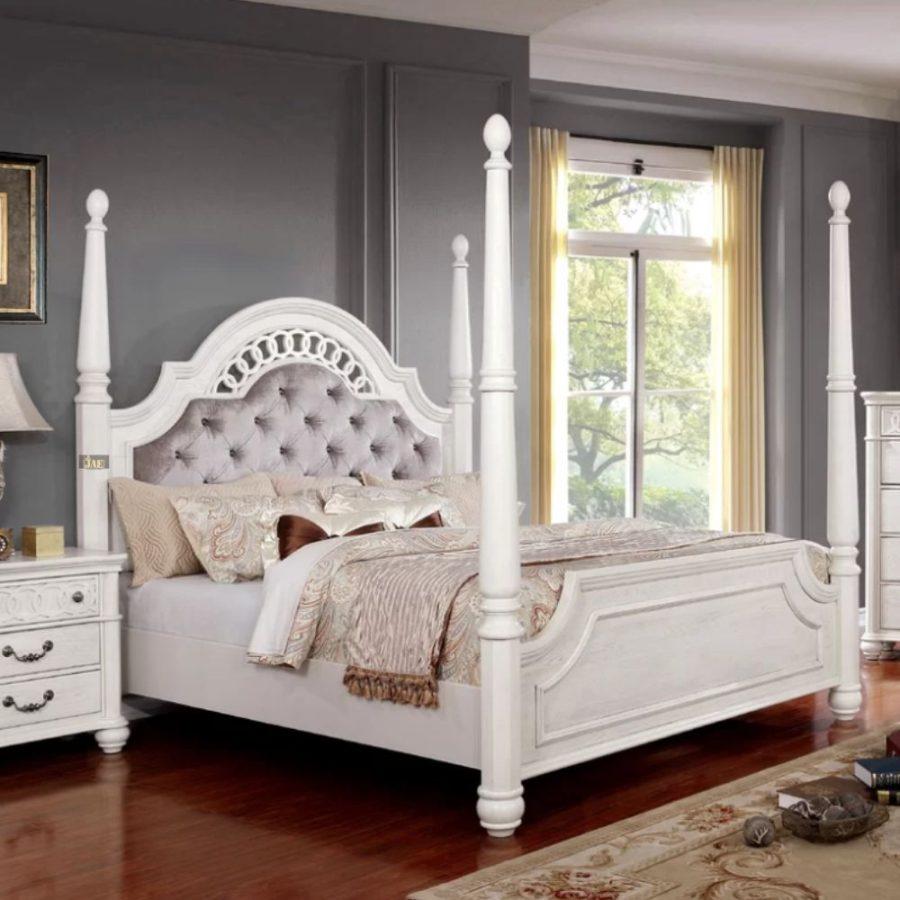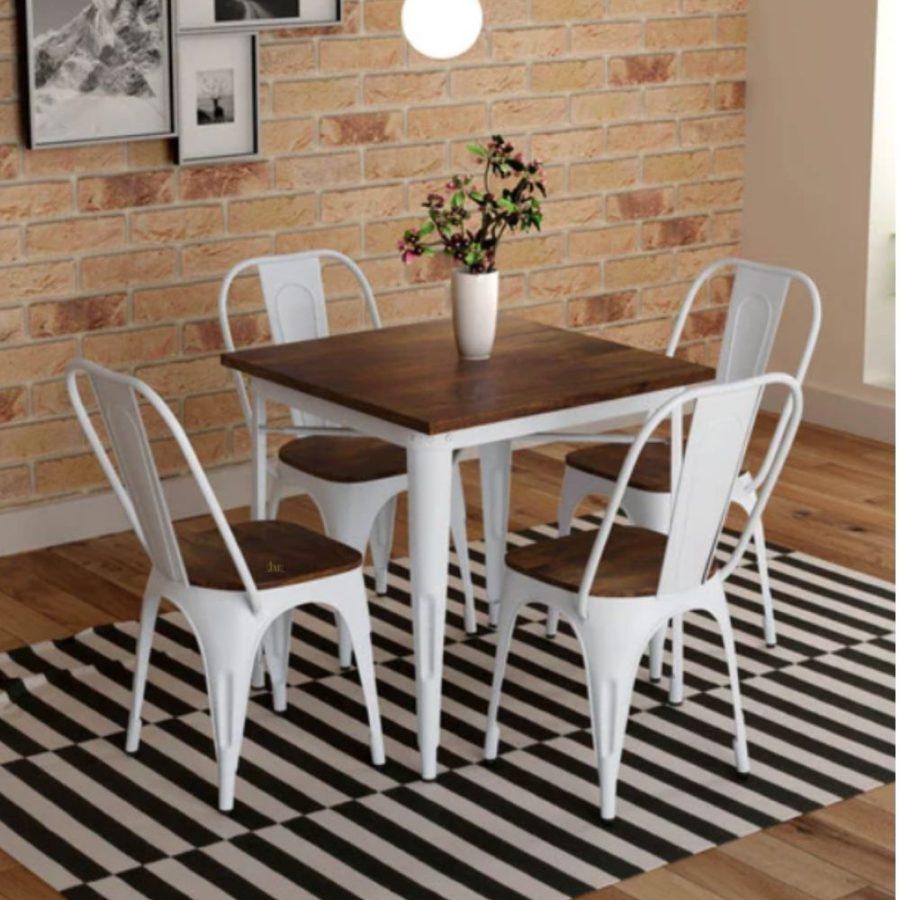In the world of furniture, the choice of wood plays a pivotal role in determining the aesthetics, durability, and overall quality of a piece. Sheesham wood and mango wood are two popular choices, each with its own set of characteristics. Let’s delve into the differences between Sheesham wood furniture and Mango wood furniture to help you make an informed decision for your home.
Understanding Sheesham Wood:
Sheesham wood, also known as Indian Rosewood, is sourced from the Sheesham tree (Dalbergia sissoo), native to the Indian subcontinent. This hardwood is renowned for its rich grain patterns, durability, and natural strength. Here are key aspects of Sheesham wood furniture:
- Appearance: Sheesham wood boasts a distinct grain pattern with dark streaks and a deep hue, ranging from golden brown to deep reddish-brown. The wood often features variations in color, enhancing its visual appeal.
- Durability: Sheesham wood is known for its robustness and durability. It can withstand everyday wear and tear, making it an excellent choice for furniture that sees frequent use.
- Craftsmanship: Craftsmen appreciate Sheesham wood for its workability, allowing intricate carving and detailing. This makes it a preferred choice for intricately designed furniture pieces.
- Maintenance: Sheesham wood furniture requires minimal maintenance. Regular dusting and occasional polishing are usually sufficient to maintain its natural luster.

Exploring Mango Wood:
Mango wood, derived from the mango tree (Mangifera indica), is another popular choice for furniture. Mango wood is considered sustainable, as it is sourced from the by-products of mango cultivation, making it an eco-friendly option. Here are the distinguishing features of Mango wood furniture:
- Appearance: Mango wood has a lighter color compared to Sheesham, ranging from pale yellow to light brown. It often features a straight grain with occasional dark streaks, offering a more uniform appearance.
- Durability: While Mango wood is durable, it is softer than Sheesham. It may be more prone to scratches and dents, making it suitable for areas with less frequent use.
- Craftsmanship: Mango wood is favored for its versatility in crafting. While it may not be as intricately carved as Sheesham, it lends itself well to modern and minimalist designs.
- Maintenance: Like Sheesham wood, Mango wood furniture is relatively low-maintenance. Regular dusting and occasional polishing can help preserve its natural beauty.

Choosing Between Sheesham and Mango Wood:
- Style Preferences: If you prefer a darker, more pronounced grain pattern with intricate detailing, Sheesham wood may be your ideal choice. For a lighter, more uniform look that suits modern aesthetics, Mango wood is a compelling option.
- Usage and Durability: Consider the intended use of the furniture. For high-traffic areas and pieces that will see frequent use, Sheesham’s durability may be more suitable. Mango wood is excellent for accent pieces and areas with lighter usage.
- Budget: Mango wood furniture is often more budget-friendly compared to Sheesham wood. If cost is a significant factor, Mango wood provides a quality option without compromising on aesthetics.
- Environmental Considerations: Mango wood is considered more environmentally friendly due to its sustainable sourcing from the by-products of the mango industry. If eco-friendliness is a priority, Mango wood is a conscious choice.
To Conclude
In the Sheesham wood vs. Mango wood debate, the choice ultimately depends on your preferences, usage requirements, and budget constraints. Both woods offer unique characteristics that can enhance the beauty of your living space. Whether you lean towards the rich tones of Sheesham or the lighter hues of Mango, the key is to choose what aligns with your personal style and functional needs. Explore the diverse range of furniture options available in each wood type to find the perfect fit for your home.
FAQs
What are the key visual differences between Sheesham and Mango wood furniture?
Sheesham wood typically features a darker hue with distinct grain patterns and occasional dark streaks, while Mango wood has a lighter color, ranging from pale yellow to light brown, with a more uniform appearance.
Is Sheesham wood more durable than Mango wood?
Yes, generally, Sheesham wood is considered more durable than Mango wood. Sheesham’s natural strength and robustness make it suitable for furniture in high-traffic areas.
Are there differences in the craftsmanship of Sheesham and Mango wood furniture?
Yes, Sheesham wood is known for intricate carving and detailing, making it a preferred choice for designs with intricate craftsmanship. Mango wood, while versatile, may not be as intricately carved but is well-suited for modern and minimalist designs.
Which wood type requires less maintenance?
Both Sheesham and Mango wood furniture are relatively low-maintenance. Regular dusting and occasional polishing are usually sufficient to maintain their natural beauty.
Is Mango wood more budget-friendly than Sheesham wood?
Yes, Mango wood is often more budget-friendly compared to Sheesham wood. If cost is a significant consideration, Mango wood provides a quality option without compromising on aesthetics.
Are there environmental considerations when choosing between Sheesham and Mango wood?
Yes, Mango wood is considered more environmentally friendly as it is sourced from the by-products of mango cultivation, making it a sustainable and eco-conscious choice.
Which wood type is better for modern design aesthetics?
Mango wood is well-suited for modern design aesthetics due to its lighter color and versatility in crafting minimalist and contemporary furniture designs. Sheesham wood, with its darker tones, is often chosen for traditional or intricately designed pieces.











